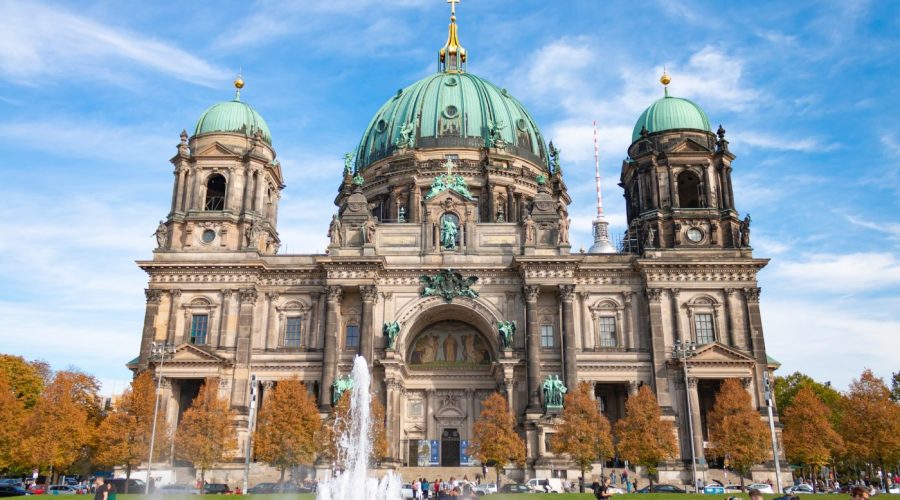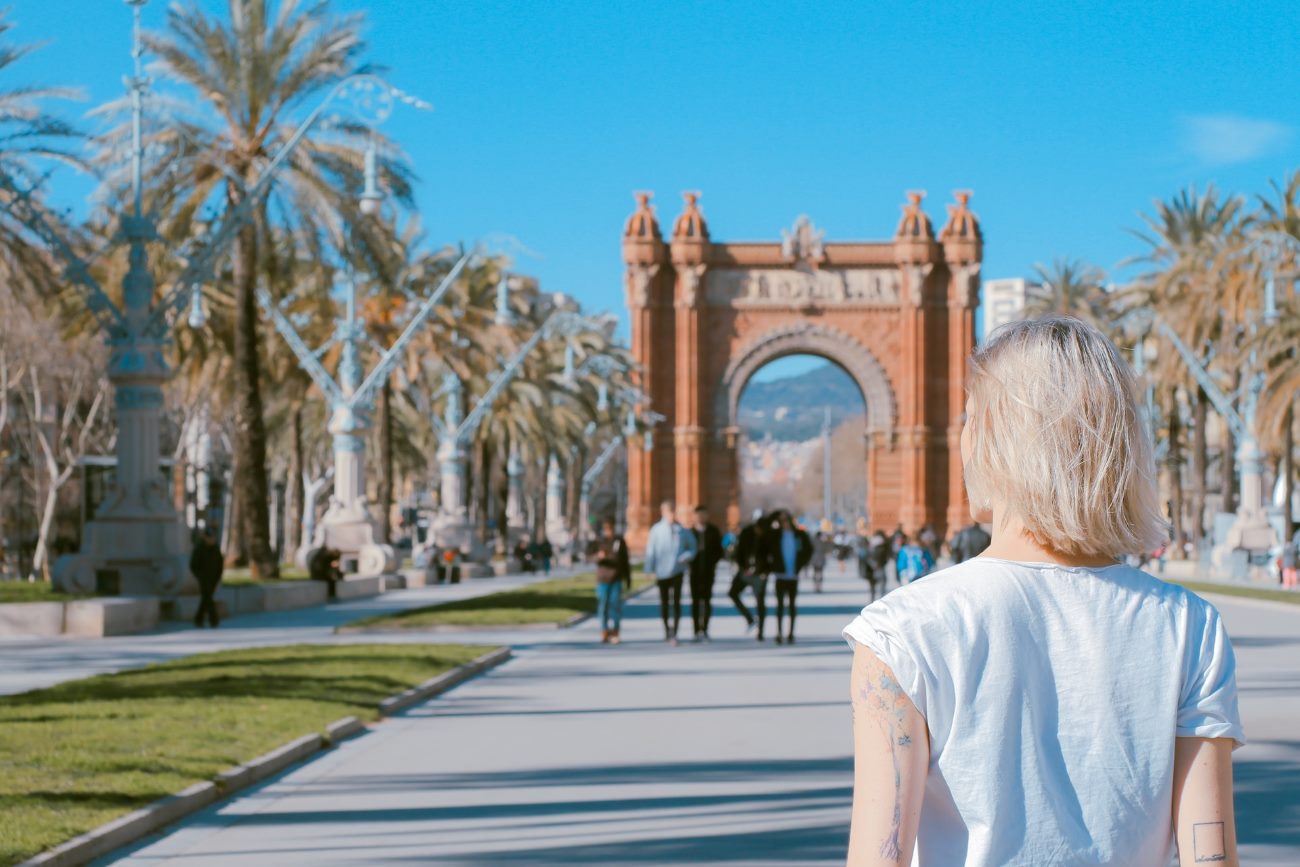Berlin’s Cold War Tour, Everything Behind the Wall
Undoubtedly, the Berlin Wall was not only a wall. It was the best representation of the suffering of families and their networks that was felt during the division of Germany after the second World War and was also the symbol of the clash that defined the Cold War between socialism on one side and the free enterprise on the other.
The Berlin Wall was a rather manifold barrier that was truly and ideologically dividing Berlin between 1961 and 1989 and enveloping and excluding West Berlin from the East German area. Construction of the wall was commenced by the German Democratic Republic or East Germany on the August 13, 1961. The wall separated west Berlin to east Berlin as well as the entire east Germany regions. The obstruction involved installing towers along tremendously big strongholds accompanied by a large area (subsequently referred to as “the no-man’s land,”) that housed enemy car lanes, beds of spikes and other barriers.
The East Block portrayed the Wall as protecting the people from fanatic factions in trying to prevent the “will of people” from establishing a communism state in East Germany. Even before the memorialisation which occurred after the fall of the wall, it was a place where dreams disappeared along with an appallingly high number of deaths. From the Wall Memorial, we will directly head to a part of Mitte where the Berlin Wall divided the American Sector from the South and as well as British Sector to the West. This will be where we get the Check Point Charlie (the most famous of all the intersection point among West and East), the huge previous House of Ministries structures (and a single remaining specimen of sturdy Nazi public constructions) and from there, now sledge to the last survival of the BT – shift Watchtower (which is can open for the visitors).
The journey ends at Potsdamer Plats which was one of the Europe’s busiest pedestrian crossing and was destroyed before the Second World War. Its scale was also reduced by the construction of the Wall as well as the enhancement of the demise strip. At the moment it has become a roaring hub of commercial and entertainment, it paints the true picture of how a city can rise from the ruins if at all there was any social construe of a disaster in the past. This is a Walking Tour pick up Transport Type whereby customers are picked from where they are and transferred to the tour starting point.
Along the Berlin Wall
Thus, the Berlin Wall was truly not only or merely a wall. It has captured the pain of division that was experienced from families and social relations after the division of Germany after the Second World War. This was the specter of the fight of socialism from all over the world against private enterprise in the cold war. Although it is not the tallest, the biggest, or the longest Wall, Berlin Wall is probably the most famous of all. However, one cannot speak about their journey to Berlin would be complete if they do not visit and other related significant sites of the structure.
Finally, this time after the World War II, Germany isolate itself and they came to know about the formation of East and West Germany. There, no place their exhibition is more evident than in Berlin. Finally, during this visit, we give to you the feeling of the actual Wall that is still in Berlin, and we propose to initiate you to this particular and complex period of Berlin and Germany’s history.
Cold war affects those countries in various ways, the following is the story of how cold war impacted on Berlin which is a divided city in Germany.
Very few families were preserved from being separated by the division of the city: the teenage moms were separated from their babies; the lovers were divided by the Berlin Wall; the youngsters who wanted to free themselves from the oppressive levels of East German culture had to risk their lives to escape it.
Along the previous passing piece of the Berlin Wall
The fifteen-kilometre course is connected with many places from the time of division – from the segment where the central design spot of the Wall fell at Bornholmer Strasse,Charlie. The site of a risky deadlock between Russian and American tanks in 1961 and a few tremendous break endeavours.
One view sees survives from the Berlin external structure.
Most certainly, the symbol of the bipolar conflict resolution and the division of the world into the powers of a majority rule and a totalitarian regime, a free market and socialism was captured by the Berlin Wall. You will also get one of just a few of the extra watch towers, the passing strip, and stowed parts of the infamous ‘Peculiar to Protection Barrier’ as was deployed under socialism in the East. You will also visit such locations as Mauer Park which has been developed from old parts of the Berlin Wall and No Man’s land into the vibrant centers and focal points of the influential social and public activity.
The Berlin Wall – History and individual stories
There is almost a book and a movie’s worth of stories concerning the Berlin Wall, residing in East Berlin, the Stasi of East Germany, and the days leading up to and immediately following November 9 1989 that put an end to the divides in the city. Contrary to the common belief, the Berlin Wall was not single wall but two. With the estimates of 155 km (96 ml) in length and 4 m (13 ft) tall, these walls were surrounded by a mined and forcefully patrolled land strip called ‘passing strip’.
It was under the constant surveillance of heavily armed East German border guards which had been authorised to fire at anyone attempting to flee to West Berlin. Thus, by 1989 the Wall was equipped with three hundred and two lookouts. More than one hundred people died while trying to get the Berlin Wall in the 28 years of its existence. But the Wall was not the most important part of the ‘Inner German border’, which divided East and West Germany and hundreds of other people also died attempting to cross other renewed borders.
What you will find during the Berlin Wall Tour
The 5-hour visit by employing a pleasant and air-conditioned vehicle that is allowed for touring purposes will cover the following:
The Allied Museum (if it is not a problem I’d like mention that it is closed on Mondays).
Brandenburg door
East Side Gallery Wall remainder with paintings of 1990,
The socialist motorcade road on Karl Marx Avenue
Schöneberg City Hall
The previous Ministry for State Security – “Stasi” Headquarters
Life in an area only close to the Berlin Wall – Prenzlauer Berg
Zionskirche – the job of the congregation in East Germany
Bornholmer Straße – site of the Fall of the Wall
Blend Mauerpark
Escape from undertakings in Bernauer Straße
Berlin Wall Memorial
Nordbahnhof demise strip and apparition station
Previous watch tower at Kieler Eck – presently Günther Litfin remembrance
Brandenburg Gate – where the Berlin had come together
Designated spot Charlie
Friedrichstraße, the former designated spot of the Palace of Tears.
This visit highlights every one of the main sites had significant job in the history of the Cold War: the Berlin Airlift Memorial at the productive Tempelhof Airport, the Allied Museum, the safeguarded legitimate pieces of the Berlin Wall, the end of temporal East German government region. In addition, we will also see the site of Checkpoint Charlie and other appropriate structures and areas in downtown.
Then we will look at the exciting period in time between the Second World War and the era in which the Berlin Wall was fitted up, whereby the strange alliance between the Soviets and Western alliess ultimately broke, which kicked off the Cold War.
How did the wall come to be developed?
What prompted its fall?
What does life look like on the two sides of the Berlin Wall?
Also we will peer at the various and wry procedures in which and why the people got away, and particular break places.
We have taken many visits to the Berlin Wall and Cold War with our Guides. As a result from our long periods of training visit directing and individual examination, we have shaped this visit. Whatever your expressions of being buffed up with a set of experiences or if you are just a curious explorer, we don’t think you’ll get frustrated. The Who, the Why, the When, and the how will be covered as well as our perception of how these set of experiences is applicable today.
Things to Know Before You Book
Wheelchair accessible
It will allow babies and littl’uns to be rode in a pram or buggy.
Administration creatures permitted
Close by there is public transportation as an option.
Transportation choices are wheelchair available
It is wheelchair available in all the regions and surfaces.
Reasonable for all actual wellness levels
At the booking time will be gotten affirmation.
Most explorers can take part
Close to open transportation
You need a number of explorers to begin with. If it’s been dropped because of the base is not met, you’ll be offered an alternate to date / insight or a total discount.
The limit of 15 explorers on this visit/mailAction will apply.
For this action, you can also introduce a paper or electronic voucher.
Cleaning and security rehearses
Upgraded tidiness measures
Tightening up the guide’s hands washing expectations.
Security measures
Covers gave
Hand sanitizer gave
Visit Overview
Possibly the most emblematic antique of the Cold War and the supposed Iron Curtain, the Berlin Wall divided Berlin into two universes that could not have been two more disparate, at least in public at that moment. In addition, it was more than “the Wall”; there were underground phantom stations, a tear castle, and complex boundary installations called “the passing strip.” It is true that the actual division wasn’t great, but there was a political division, a few out-and-out idiocies, unrealistic philosophical hindrances.
If you want a drenching in Berlin Cold War past universe of communist East Berlin, you’re here on this Berlin Cold War visit. Discover the amazing getaway from stories, about the Allied tank conflict at Checkpoint Charlie and about Soviet landmarks which are still of immense emblematic importance to this day. Explore Brandenburg Gate which was once a symbol of division and now of German reunification.
Nowadays, we can look at the East Side Gallery, where the deadly wall has been involuntarily committed as the most extended outdoors artistry display on Earth.
Visit Flexibility
Time and content of this visit are versatile. Based on four hours span, it is suggested. The Soviet War Memorial in Treptow or East Side Gallery, or any of the former Stalin Alee are all available for the eight hour total day where one can be coordinated. Visit is custom fitted to your inclinations each time. If there are certain spots you would like to go, tell us ahead of time that we can then plan a schedule from what you want to visit only for you.
Considerations:
Confidential Expert Guide
Dropping out & picking up at Hotel
Public Transport Tickets
Private Transport options
Table of Contents



